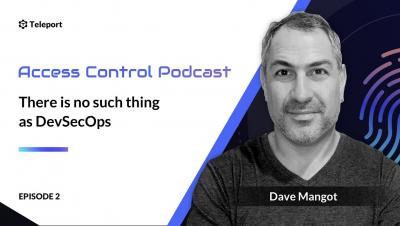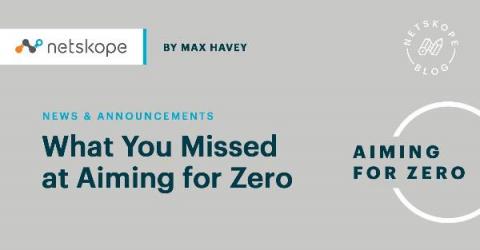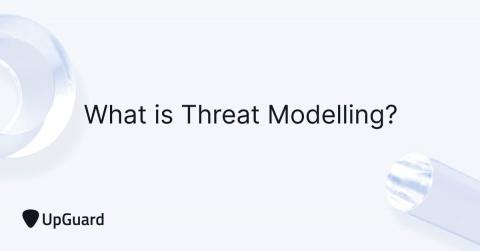Security | Threat Detection | Cyberattacks | DevSecOps | Compliance
%term
Spambrella Wins Queen's Award for Enterprise
Spambrella the Global Email Security and Corporate Governance company has been awarded a highly prestigious Queen’s Award for Enterprise in the United Kingdom. Presented on behalf of Her Majesty The Queen, for demonstrating excellence in International Trade.
What You Missed at Aiming for Zero
In case you missed it, Netskope’s recent Aiming for Zero event was focused around how Zero Trust is more than just access controls and passwords—it’s a security concept that applies to all aspects of your network, your data, the applications you use, and the way you interact with them. If you missed the event and want to hear more about our deep dives int Zero Trust, there’s no need to worry!
What is Threat Modelling? 10 Threat Identity Methods Explained
Threat modelling is a process for identifying potential threats to an organization's network security and all the vulnerabilities that could be exploited by those threats. Most security protocols are reactive - threats are isolated and patched after they've been injected into a system. Threat modelling, on the other hand, is a proactive approach to cybersecurity, whereby potential threats are identified and anticipated.
SIEM Use Cases: Implementation and Best Practices
A security and information event management (SIEM) tool can be a valuable component of a mature security strategy. Indeed, effective SIEM solutions have been available for well over a decade. Organizations typically purchase SIEM tools expecting fast implementation and reliable security threat alerts that provide the intelligence required to respond promptly and prevent breaches. The reality is quite different.
Why use a password manager?
Password managers protect your online logins. As more people are now working from home, issues of online security have made password managers an essential tool. It is too easy to fall into the habit of reusing the same password for multiple sites. Doing so is bad password hygiene. In this blog, we explore why you should use a password manager and what password hygiene is.
The importance of creating a small business Cybersecurity plan
It’s estimated that cyber crime will cost businesses as much as $45,000,000,000 by 2025. Each year, small businesses who haven’t put a cyber security plan in place are at the mercy of hackers who are using ever increasingly sophisticated methods to breach their network, compromise their data - and even hold the business to ransom.
Social Engineering: The Art of Human Hacking
In the beginning, social engineering was an art of social science. It is used to change people’s behaviour and make changes in society. It looks at a lot of groups, including government, media, academia and industries. Nevertheless, with the development of technology and people’s concerns about security, social engineering has started to be used. Cyber criminals use it to trick humans by using deceptive techniques or information that disguises their intentions.
How To Secure Your SDLC The Right Way
The ever-evolving threat landscape in our software development ecosystem demands that we put some thought into the security controls that we use throughout development and delivery in order to keep the bad guys away. This is where the secure software development life cycle (SSDLC) comes into play. Organizations need to make sure that beyond providing their customers with innovative products ahead of the competition, their security is on point every step of the way throughout the SDLC.
Weekly Cyber Security News 29/04/2021
A selection of this week’s more interesting vulnerability disclosures and cyber security news. For a daily selection see our twitter feed at #ionCube24. I don’t know about you, but I’ve always been wary of the risk of QR codes. Yes they are useful, but the risk of visiting a dodgy embedded URL without prompt goes against all we’re told. I’m pretty sure there have been issues in the past, but here is a new example.











